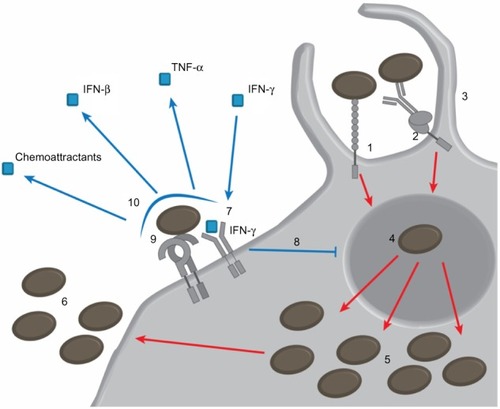Figures & data
Figure 1 Francisella tularensis (brown) binds to the cell surface using receptors such as the mannose receptor (1) or, in the case of opsonized bacteria, Fc receptors (2) or complement receptors. Bacteria enter the cell through looping phagocytosis (3) but survive by preventing maturation of the phagosome (4). F. tularensis escapes the phagosome to replicate in the cytoplasm (5), ultimately inducing apoptosis and escaping the cell (6). When macrophages are simulated by exposure to IFN-γ (7), they can restrict intracellular replication (8). Stimulation by IFN-γ and stimulation of Toll-like receptor 2 (9) can also lead to secretion of inflammatory cytokines and chemoattractants (10).
Abbreviations: IFN, interferon; TNF, tumor necrosis factor.

